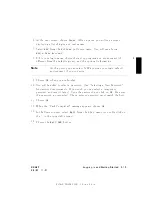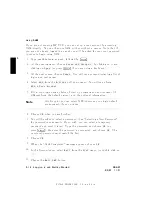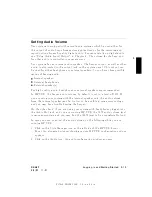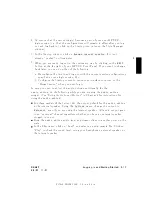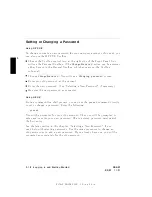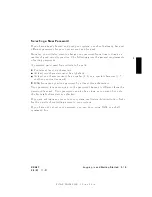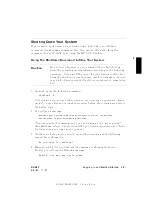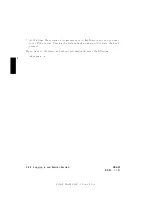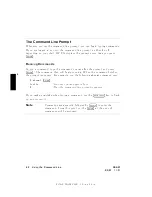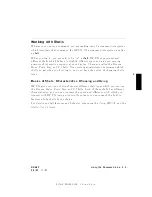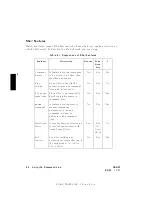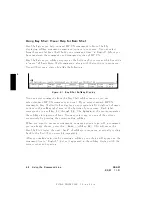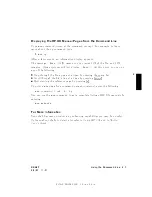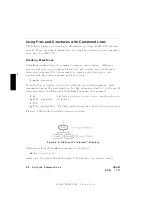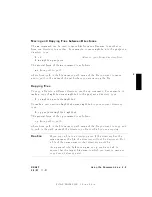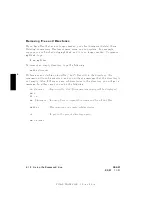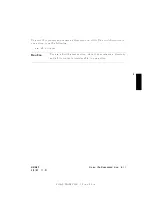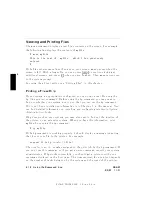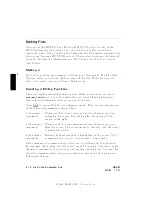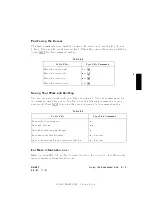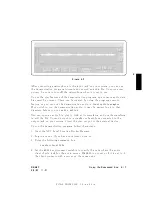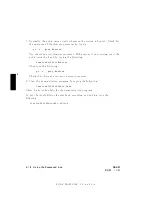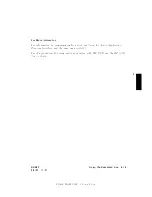
FINAL
TRIM
SIZE
:
7.0
in
x
8.5
in
4
Determining
Y
our
Login
Shell
The
command
echo
$SHELL
displays
the
le
name
of
the
shell
y
ou
en
tered
when
y
ou
logged
in.
$
echo
$SHELL
/bin/sh
$
T
emporarily
Changing
Y
our
Shell
Unless
y
ou
are
in
a
restricted
shell,
y
ou
can
temp orarily
c
hange
y
our
shell
b
y
using
this
command:
shel
l
name
where
shel
l
name
is
the
name
of
the
shell
(for
example,
sh ,
ksh ,
or
keysh ).
T
emp orarily
c
hanging
y
our
shell
lets
y
ou
exp erimen
t
in
other
shells.
By
t
yping
the
name
of
the
shell
y
ou
w
an
t
to
run,
y
ou
invoke
(en
ter)
that
shell,
and
the
correct
prompt
is
display
ed.
After
exp erimen
ting
in
the
new
shell,
return
to
y
our
original
shell
b
y
t
yping
either
exit
or
4
CTRL
5-4
D
5.
P
ermanently
Changing
Y
our
Shell
T
o
p ermanen
tly
c
hange
y
our
lo
gin
shel
l
(the
default
shell
y
ou
get
when
y
ou
log
in),
use
the
chsh
( ch ange
sh ell)
command:
chsh
username
shel
l
p
ath
name
where
username
is
y
our
user
name
and
shel
l
p
ath
name
is
the
full
path
name
(e.g.,
/bin/ksh)
of
the
shell
y
ou
w
an
t
as
y
our
default.
After
y
ou
use
the
chsh
command,
y
ou
m
ust
log
out
and
log
in
again
for
the
c
hange
to
take
eect.
F
or
example,
if
terry
c
hanges
the
default
login
shell
to
the
Korn
Shell,
the
command
reads:
$
chsh
terry
/bin/ksh
$
DRAFT
2/5/97
11:31
Using
the
Command
Line
4-5

